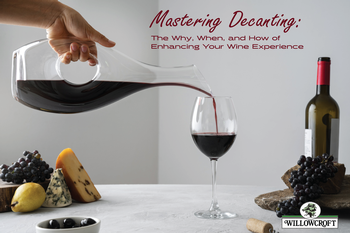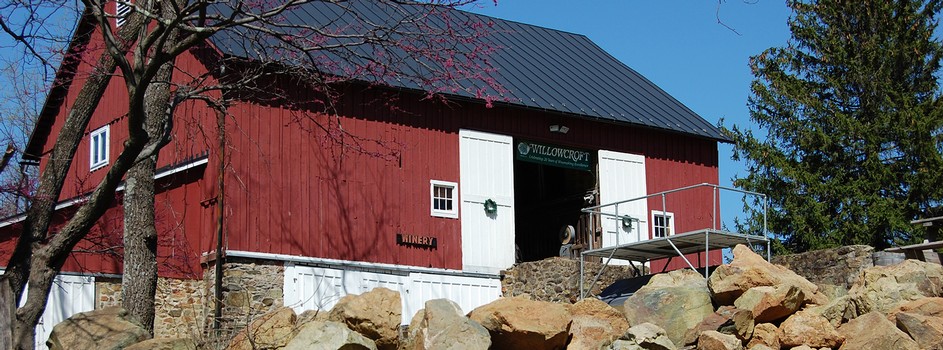Mastering Decanting: The Why, When, and How of Enhancing Your Wine Experience
 At Willowcroft Farm Vineyards, we’re dedicated to helping our customers enjoy their wines at their best. One key practice we emphasize is decanting. Besides a glass and a corkscrew, a decanter is an essential accessory for any wine lover’s bar cart. While learning how to decant wine isn’t tricky, understanding its purpose and timing can significantly enhance your wine-drinking experience.
At Willowcroft Farm Vineyards, we’re dedicated to helping our customers enjoy their wines at their best. One key practice we emphasize is decanting. Besides a glass and a corkscrew, a decanter is an essential accessory for any wine lover’s bar cart. While learning how to decant wine isn’t tricky, understanding its purpose and timing can significantly enhance your wine-drinking experience.
What is a Decanter and What Does It Do?
A decanter is a glass vase designed to hold wine or liquor. Beyond its decorative appeal, a decanter plays a crucial role in aerating wine. The broad base of a decanter increases the wine’s exposure to oxygen, allowing it to breathe and develop its flavors. Additionally, decanting helps remove sediment from older red wines. As you pour the wine slowly into the decanter, stop when you see sediment to keep it in the bottle and out of your glass.
Which Wines Need Decanting?
There are no strict rules for when to decant a wine, but generally, full-bodied, young wines benefit the most from decanting. A young wine, such as a big, bold Cabernet, may taste tight and stiff if opened too early. Decanting allows these wines to mellow and become more approachable.
When to Avoid Decanting
Not all wines require full decanting. Unoaked whites and rosé are often best enjoyed straight from the bottle with minimal aeration, while oaked Chardonnay needs only a few swirls in your glass. If exposed to too much air, sparkling wines and Champagne will lose their effervescence. Additionally, very old wines (15+ years) can become overly aerated if left in a decanter for too long, losing their delicate structure and unique character. A brief decanting session of about 30 minutes is usually sufficient for these aged wines.
How to Taste-Test
Tasting is a crucial part of the decanting process. Plan and sample the wine periodically as it decants to determine the optimal time. This ensures you won’t over-aerate and dull the wine’s flavors. By taste-testing, you can confidently serve a perfectly aerated wine to your guests, enhancing their enjoyment and your reputation as a knowledgeable wine host.
The Benefits of Learning How to Decant Wine
Understanding when and how to decant wine transforms your wine-drinking experience. You’ll make more informed choices when buying and serving wine, ensuring you never waste a great bottle. This knowledge also helps you build a diverse wine collection ready to pour at any stage. Whether enjoying a young, robust wine or a delicate, aged vintage, mastering decanting ensures you get the most out of every bottle. So, next time you’re preparing for a special occasion or just a casual evening, remember the power of the decanter and elevate your wine experience. Cheers!

